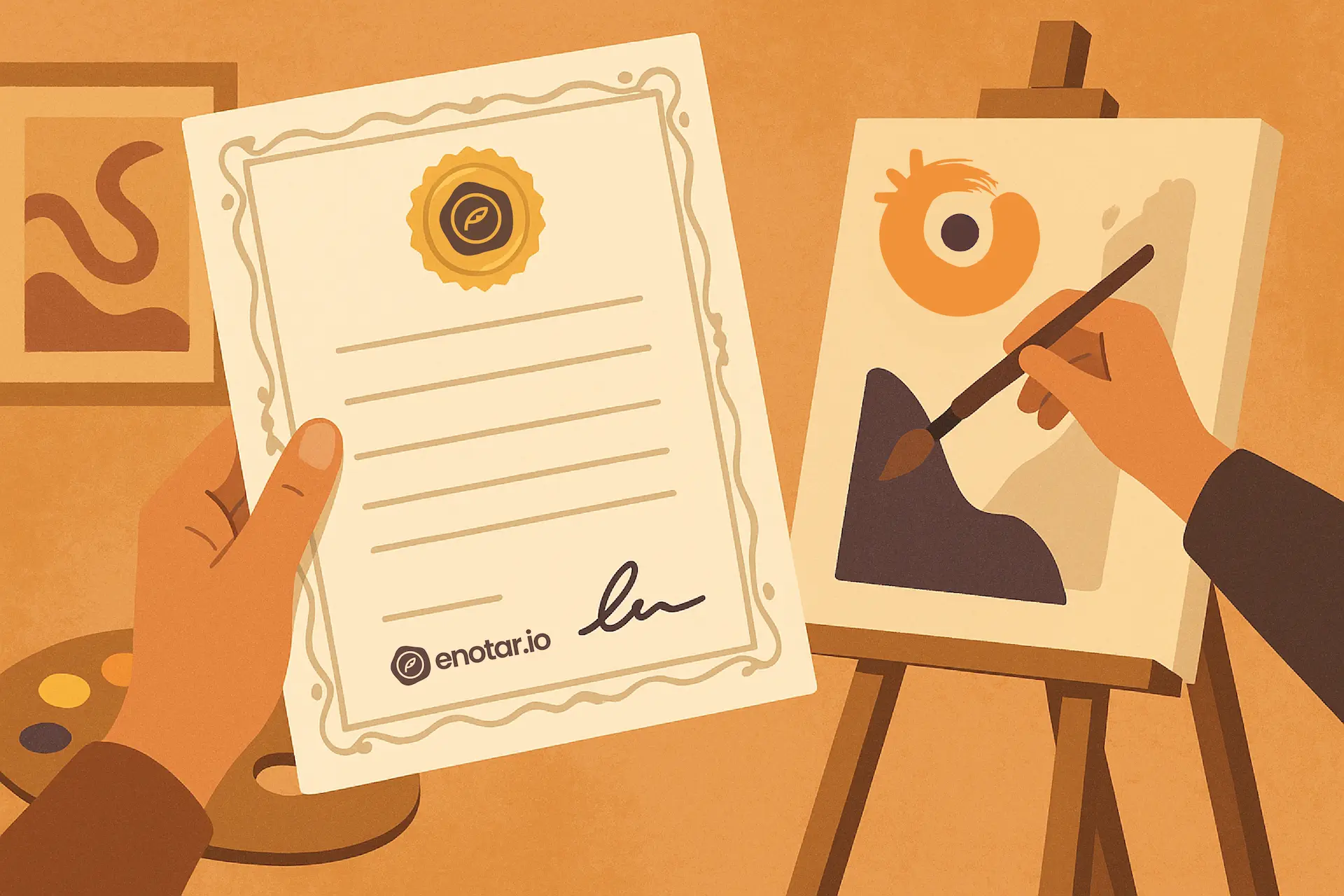Written by: Silvia Elena Fallas Garita
opticaef.com
July 30, 2025
The legal dimension of arts and culture is essential, as it safeguards authorship, reproduction rights, and both moral and economic rights. In visual arts, although each case may vary, there are general principles that every artist should take into account.
To begin with, copyright refers to the protection of artistic, literary, and scientific creations, unique productions, as well as software developments and databases.(1) In general, it applies to any form or medium of expression, as long as its authorship is justified. Copyrights are part of the intellectual property of individuals and industries.
In this context, certificates of authenticity aim to validate the intellectual property of a work within a specific space and time.
What is protected?
Copyright protects the author in several dimensions: the original creation, its reproductions, and the author’s moral and economic rights. In the case of artistic works, the legal definition includes drawings, sketches, cartoons, comics, and more, provided they meet three requirements:
- They must be an authentic human creation.
- They must be unique.
- They must represent a form of creative expression.
Moral rights cover authorship, dissemination, integrity, modification, withdrawal, and the application of civil laws (limited to each respective country). While they do have certain restrictions, they last in perpetuity. Only 70 years after the author’s death—when heirs or public authorities may take over—does the work enter the public domain.
On the other hand, economic rights allow the author to control the reproduction, distribution, transformation, adaptation, resale, tracking, and public communication of their works.
A certificate of authenticity is therefore a legally valid document through which the author secures protection of their moral and economic rights over the artistic creation.
Where is it registered?
Registration may be carried out through national institutions or, in some cases, regional or international entities. However, for many artists, these processes are often unknown, slow, or expensive.
The advantage of enotar.io is that it provides international protection. As a legally valid digital document based on blockchain technology, it enables artists to register and protect the authenticity of their artwork, regardless of the current owner (different from authorship).
The registration process with enotar.io is simple and affordable compared to traditional systems. Moreover, being digital, it ensures that documentation cannot be lost, deleted, or altered without the express authorization of the author.
Why is it important?
Providing or requesting a certificate of authenticity goes far beyond verifying the originality of an artwork. This document represents an asset for artists, museums, collectors, galleries, and the art market as a whole. It protects cultural heritage, strengthens credibility, and contributes to the professional development of the arts and culture.
It is important to note that every legal case may have exceptions, and each situation is unique. If you have specific questions or require assistance with a case, you should seek advice from a lawyer or a subject-matter expert.
(1) All these works are unique creations made by a person, which places them under the same level of legal protection. In the case of works generated with artificial intelligence or other automated tools, different legal considerations apply, which are not covered in this article.
Optica.ef | Digital Art Gallery
🌐 opticaef.com
📱 +506 8706 5828
✉️ info@opticaef.com
Social Media:
- LinkedIn: @opticaef
- Instagram & Facebook: @optica.ef
🎧 We invite you to listen to our podcast on this topic on Spotify.


